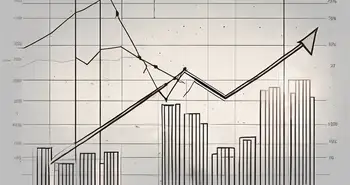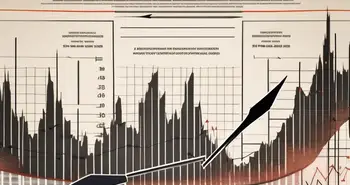Exploring Fractional Shares: What Are They and How Do They Work?

If you've been keeping an eye on the stock market, you may have come across the term “fractional shares.” But what exactly are fractional shares and how do they work? In this article, we will delve into the intricacies of fractional shares to help you understand their concept, mechanics, benefits, potential drawbacks, and their relationship with dividends. So let's get started!
Understanding the Concept of Fractional Shares
Before we dive into the details, let's define what fractional shares actually are. A fractional share is a portion or fraction of a whole share of stock. Traditionally, investors were only able to buy whole shares of stock. However, with the rise of technology and innovative financial services, it is now possible for investors to purchase less than one whole share.
Now, let's take a closer look at the concept of fractional shares and how they work.
Definition of Fractional Shares
In simpler terms, fractional shares allow you to invest in companies without having to buy a full share. Let's say you want to invest in a company whose shares are trading at $100 each, but you have only $50 to spare. In the past, you would have been limited to waiting until you had enough funds to purchase a whole share. However, with fractional shares, you can now invest that $50 and own a fraction of a share in that company.
This opens up opportunities for investors with limited funds to diversify their portfolios and invest in a wider range of companies. Instead of being restricted to purchasing whole shares of a few companies, fractional shares enable investors to spread their investments across multiple companies, even with smaller amounts of capital.
The Basics of Fractional Shares
Now that we understand the definition, let's explore the basics of fractional shares. When you buy fractional shares, you essentially pool your funds with other investors who also own fractional shares of the same stock. The value of your stake in the company is determined by the proportion of fractional shares you own in relation to the total number of outstanding shares.
For example, let's say there are 1,000 outstanding shares of a company, and you own 10 fractional shares. This means you own 1% of the company. If the company pays out dividends, you would receive 1% of the total dividend amount based on your ownership percentage.
Furthermore, fractional shares also allow for more flexibility in terms of buying and selling. Instead of waiting to accumulate enough funds to buy a whole share, you can invest any amount you desire, even if it's just a small fraction of a share. This gives investors the ability to take advantage of market opportunities and make investments according to their budget and investment goals.
Additionally, fractional shares can be particularly beneficial for investors who want to invest in high-priced stocks. Instead of having to save up a large sum of money to buy a single share of an expensive stock, investors can now purchase fractional shares of that stock with a more affordable amount of capital.
It's important to note that fractional shares are typically offered through brokerage firms or investment platforms that specialize in fractional investing. These platforms provide the infrastructure and technology to facilitate the trading and ownership of fractional shares, making it accessible to a wider range of investors.
In conclusion, fractional shares have revolutionized the way investors can participate in the stock market. By allowing investors to buy and own fractions of shares, it opens up opportunities for diversification, flexibility, and accessibility. Whether you have a small amount of capital or want to invest in high-priced stocks, fractional shares provide a solution that caters to a broader range of investors.
The Mechanics of Fractional Shares
Now that we have a grasp of the concept, let's explore how fractional shares are created and how you can buy and sell them.
Fractional shares are a fascinating innovation in the world of investing. They allow investors to own a portion of a company without the need for a large capital outlay. But how exactly are these fractional shares created?
How Fractional Shares are Created
Fractional shares are typically created by brokerage firms. When you place an order to buy fractional shares, your brokerage takes the total amount you want to invest and divides it by the current share price to determine the fraction you will own. This process is done automatically by the brokerage's systems, making it a seamless and efficient experience for investors.
Once the fraction is determined, the brokerage then pools together the fractional shares of all investors and holds them on their books. This pooling of fractional shares allows investors to collectively own a whole share of a company, even if individually they only own a fraction of it. It's a brilliant way to democratize investing and make it accessible to a wider range of people.
Imagine you want to invest $500 in a company whose shares are currently priced at $100. With fractional shares, you can own 5/100th (or 1/20th) of a share in that company. This means you get to participate in the company's growth and potential dividends, even if you don't have enough capital to buy a full share.
Buying and Selling Fractional Shares
Buying and selling fractional shares is similar to buying and selling whole shares. Many online brokers now offer fractional share trading as a service to their customers, making it easy for anyone to participate in the stock market.
When it comes to buying fractional shares, the process is straightforward. You can usually buy fractional shares through your broker's website or mobile app, just as you would with whole shares. The only difference is that you specify the amount you want to invest, and the brokerage system automatically calculates the fraction you will own based on the current share price.
Selling fractional shares also follows a similar process. You can place a sell order through your broker, specifying the quantity or percentage of the fractional shares you wish to sell. The brokerage will then execute the order and credit your account with the proceeds from the sale.
It's important to note that some brokerage firms may have specific guidelines or restrictions when it comes to selling fractional shares. For example, they may require a minimum quantity of fractional shares to be sold or charge additional fees for selling them. Therefore, it's always a good idea to familiarize yourself with your broker's policies before engaging in any selling activities.
Overall, fractional shares have opened up a world of possibilities for investors. They provide a flexible and accessible way to invest in companies, even if you don't have a large amount of capital. So whether you're a seasoned investor or just starting out, fractional shares can be a valuable tool in your investment strategy.
Benefits of Investing in Fractional Shares
Now that we understand how fractional shares work, let's explore the benefits they provide to investors.
Affordability of Fractional Shares
One of the key advantages of fractional shares is affordability. With fractional shares, you can invest in high-priced stocks that may have been out of reach in the past. This opens up a world of investment opportunities, allowing you to diversify your portfolio even with limited funds.
Imagine being able to invest in companies like Amazon, Google, or Tesla, which have high stock prices. In the past, buying a single share of these companies would have required a significant amount of capital. However, with fractional shares, you can invest as little as $5 or $10 and still own a portion of these companies. This democratization of investing allows individuals with smaller budgets to participate in the growth potential of these high-performing stocks.
Diversification Opportunities with Fractional Shares
Investing in fractional shares also provides diversification opportunities. Rather than putting all your eggs in one basket by purchasing whole shares of a single company, fractional shares allow you to spread your investment across multiple companies and sectors. This diversification can help reduce risk and potentially increase your chances of positive returns.
For example, let's say you have $500 to invest. In the past, you might have been limited to investing in just one or two companies. However, with fractional shares, you can allocate that $500 across a diverse range of companies, such as technology, healthcare, finance, and consumer goods. By spreading your investment, you can mitigate the impact of any single company's performance on your overall portfolio.
Personally, I remember a time when I was interested in investing in a tech giant, but the stock price was too high for my budget. However, with fractional shares, I was able to invest a small amount and become a shareholder in that company. It not only allowed me to participate in the company's growth but also gave me a sense of pride and ownership.
Furthermore, fractional shares also provide the opportunity to invest in companies that you believe in, even if you can't afford a whole share. Let's say you are passionate about renewable energy and want to support companies in that sector. With fractional shares, you can invest in multiple renewable energy companies, contributing to the growth and development of the industry as a whole.
Overall, fractional shares offer investors the chance to build a diversified portfolio with limited funds and invest in companies they believe in, regardless of the stock price. It's a game-changer for individual investors, democratizing the investment landscape and opening up new possibilities for wealth creation.
Potential Drawbacks of Fractional Shares
While fractional shares offer many advantages, it's important to consider the potential drawbacks as well.
When it comes to liquidity concerns with fractional shares, there are a few factors to keep in mind. Since fractional shares are not as widely traded as whole shares, there may be instances where it is more challenging to find buyers or sellers for your fractional shares. This could result in slower transaction times or even the need to sell at less favorable prices. It's crucial to be aware of this potential limitation and plan accordingly.
Additionally, the potential risks involved with fractional shares should not be overlooked. As with any investment, the value of your fractional shares can fluctuate, and you may experience losses. It's important to conduct thorough research and understand the risks associated with the specific companies you choose to invest in. While fractional shares can provide access to high-value stocks that may have been otherwise unaffordable, it's essential to carefully consider the potential risks and ensure you are comfortable with them.
Diversification is another aspect to consider when investing in fractional shares. While fractional shares allow you to invest in multiple companies with smaller amounts of money, it's still important to diversify your portfolio. Investing solely in fractional shares of a single company may expose you to concentrated risk. By diversifying across different sectors and industries, you can potentially mitigate some of the risks associated with individual companies.
Furthermore, it's worth noting that fractional shares may not always come with the same voting rights as whole shares. This means that as a fractional share owner, you may not have the same level of influence or decision-making power as those who own whole shares. This lack of voting rights can be a drawback for some investors who value having a say in the company's direction.
Lastly, it's important to consider the potential impact of fees when investing in fractional shares. Some brokerage platforms may charge additional fees for buying or selling fractional shares, which can eat into your overall returns. It's crucial to carefully review the fee structure of the platform you choose and consider how it may affect your investment strategy.
Fractional Shares and Dividends
Now, let's explore the relationship between fractional shares and dividends, a key aspect of many investors' strategies.
How Dividends Work with Fractional Shares
When it comes to dividends, fractional shares work just like whole shares. If you own fractional shares in a company that pays dividends, you will receive a proportional amount of the dividend based on the fraction of shares you own. This can provide income and potentially be reinvested into additional fractional shares or used as cash flow.
Reinvesting Dividends into Fractional Shares
To maximize the benefits of dividends, some investors choose to reinvest their dividends into additional fractional shares. By reinvesting dividends, you can compound your returns by purchasing more shares in the company without the need for additional funds. This can accelerate the rate of growth in your investment over time.
In conclusion, fractional shares have made investing in the stock market more accessible and affordable. They provide opportunities for diversification, allowing investors to own fractions of high-priced stocks. However, it's essential to be aware of potential liquidity concerns and risks associated with fractional shares. By understanding the mechanics and benefits, you can make informed investment decisions that align with your financial goals.
I hope this article has shed light on the world of fractional shares and how they work. Remember, no matter how small your investment, it can still have a big impact on your financial journey.
As you consider the potential of stock trading and the broader cryptocurrency landscape, why not expand your investment horizon with Morpher? At Morpher.com, you can leverage the power of blockchain technology to trade across a multitude of asset classes, including cryptocurrencies, without the burden of fees or liquidity constraints. With the ability to engage in fractional investing, short selling, and up to 10x leverage, Morpher offers a unique and flexible trading experience that aligns perfectly with the innovative spirit of crypto mining. Take control of your investments with the safety of the Morpher Wallet and explore new market opportunities today. Sign Up and Get Your Free Sign Up Bonus to embark on a transformative trading journey with Morpher.

Disclaimer: All investments involve risk, and the past performance of a security, industry, sector, market, financial product, trading strategy, or individual’s trading does not guarantee future results or returns. Investors are fully responsible for any investment decisions they make. Such decisions should be based solely on an evaluation of their financial circumstances, investment objectives, risk tolerance, and liquidity needs. This post does not constitute investment advice.

Painless trading for everyone
Hundreds of markets all in one place - Apple, Bitcoin, Gold, Watches, NFTs, Sneakers and so much more.

Painless trading for everyone
Hundreds of markets all in one place - Apple, Bitcoin, Gold, Watches, NFTs, Sneakers and so much more.









